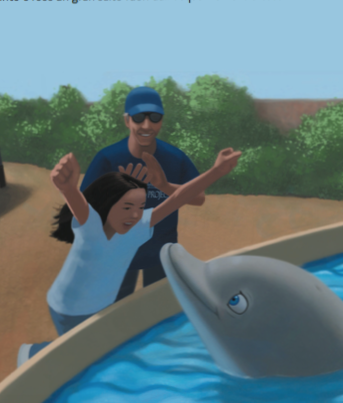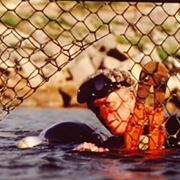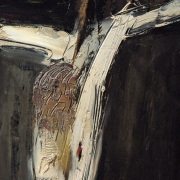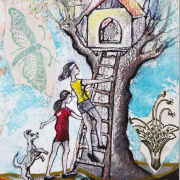Squee’s Great Escape
“The grown-up dolphins warned him, Don’t get too close to people. Most are friendly, but there are some people who are unkind. Some humans take dolphins away from the ocean, and those dolphins never come back” (Squee’s Great Escape, 2018)
This week, as the The Turin International Book Fair (Salone Internazionale del Libro) takes place, we would like to turn our attention to publications for children.
Squee’s Great Escape, by H. Hesselager O’Barry (2018) is an illustrated book for young readers from around 7 to 10 years of age. It is the story of a free young dolphin who is stolen from the sea, from his mother and family. In his new life he will be turned into a clown to entertain the public of a marine park. No more surfing the waves. No more chasing small bright-colored fish.
Now, if he wants dinner, he must literally jump through hoops. He is confined in a small cement tank. He is lonely, he is sad, he wants his mom. Human faces stare at him, applaud, make silly comments: “Children have a such a good time! They want to touch the dolphins!”.
And then, one day, Squee meets a young girl, Mai Li. She is the only one to notice how unhappy he is. She wants to help him. Will she be able to free Squee from his prison and reunite him with his mom?
Translations
The book was translated into Italian and Spanish by two Galactus Translations collaborators: La Grande Fuga di Squee (Italian translation by E. Montrasio) and La Extraordinaria Fuga de Squee. (Spanish translation by A. M. Pérez Betancour).
The author
Helene Hesslager O’Barry has been of the front lines against dolphin captivity for decades. Brazil, Guatemala, Honduras, Nicaragua, Colombia, Indonesia, Japan, are just some of the places where she has helped and is still helping dolphins.
The beautiful dedication to the dolphins that opens her book tells us that freedom is something to which all animals are entitled: “I dedicate the story of Squee to all the dolphins I have met, both in the wild and in captivity. In particular, I will always remember those dolphins that I have helped set free, and the joy in their eyes as they returned to their ocean home”.
It is a hymn to freedom for all animals, composed to acknowledge and respect what they feel. Do dolphins really have fun have in an aquarium? That is what some may think. Because of the shape of their jaw that looks like a smile even when the dolphins are suffering, a dolphin’s smile never fades, not even when they are sad, when they are sick, when they decide that a life locked up in a swimming pool is no longer worth living (see our previous article, Behind the Dolphin Smile: From Flipper To The Birth Of The Anti-Captivity Movement).
Precisely because children are particularly sensitive to animal suffering, children understand, and will be happy to read, in this wonderful book written especially for them, that captive dolphins can sometimes go back to their homes in the sea and reunite with their families and friends! Just like any child would want to do. Going back to their moms after being separated from them is the strongest wish any offspring will ever have, regardless of their species.




 William Congdon Foundation
William Congdon Foundation

